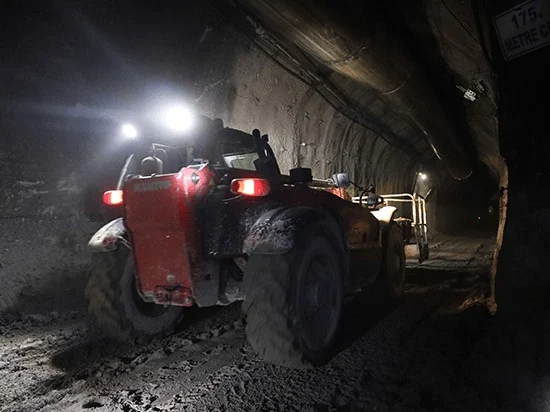There are a lot of dangers associated with underground mining operations. The job is tricky in nature as tunneling through earth can presents miners with various unfamiliar environments. They face a host of problems on the job which affect their health and safety. One of the biggest reasons contributing to this is the difficulty of communication.
It is quite difficult to correctly keep track of what is going on below ground level, especially because communication is not smooth. In addition, there is a lack of proper lighting. Even though the workers are given a plan and layout of what their task should entail, lack of proper illumination can lead to dangerous situations.
For this reason, it is essential to equip all workers with necessary safety equipment. In addition, proper monitoring from the surface should be maintained. For this, establishing strong communication is important.
Therefore, proper voice communication is essential during underground mining. It is essential for maintaining productivity and safety. 2 of the best voice communication solutions are leaky feeder radio devices for underground tunnels and mines, and Voice of Internet Protocol technology (VoIP).
A leaky feeder is basically a coaxial cable with sections of its copper shielding stripped away to enable radio frequency signals to escape. It is often used to extend mobile coverage in locations where there is lower power level and RF communication is difficult. As it does not interfere with microphones and other communication devices, it is a common favorite at mine sites. It is usually difficult to communicate with hand-held radios during underground mining. Base stations on the surface site can be routed and multiple audio channels can be combined so the miner’s communications remain separate. They can also be combined depending on requirements.
Person-to-person VoIP phone calls is another solution as it offers a communication method. You can discussion instructions, technical information, production and safety related issues via this mode of communication. Underground miners can use this method to not only communicate with management on the surface but also discuss with fellow underground miners. VoIP does not face the same restrictions as the two-way radio. It can establish communication between multiple people at the same time. There are Push to Talk functions for group calls.
There has been a significant improvement in underground mine traffic management and optimization thanks to performant central servers. These are web-based console used for electronic safety and automation applications. The servers help to obtain immediate notification of alarms sent through e-mail and cellular SMS. It provides a great way to monitor system integrity and network management tools. You may want to select central servers allow data logging in SQL database with ODBC views and have an open-architecture API for third-party applications.
System configuration and visualization of tracking data on mine map is one of the most important tasks of the central servers at mine sites. Generating reports and real-time dashboards is also a significant application. A lot of emphases is given to user security.
Keep in mind that lack of ventilation is a very important cause of accidents during mining. Ventilation systems are specially designed for underground mining to reduce the amount of harmful fumes like methane and carbon dioxide emitted from mines. The systems have ventilation shafts excavated to take in oxygen from the surface. Careful planning is required to design these shafts. Import factors to consider are shape, size, airflow and location of control devices.
Underground mine workers are prone to a lot of danger but careful planning, monitoring and traffic management can help avoid unlikely situations. All employees must be trained for personal safety.

